Make this homemade Chamoy sauce and take your taste buds on a savory, sweet, tangy, and spicy adventure. It’s the best chamoy sauce recipe you'll ever try… and you can use it to make mangonada, drizzle on ice cream or fresh fruits such as these Mexican fruit cups, as a dipping sauce, or mix it into cocktails.
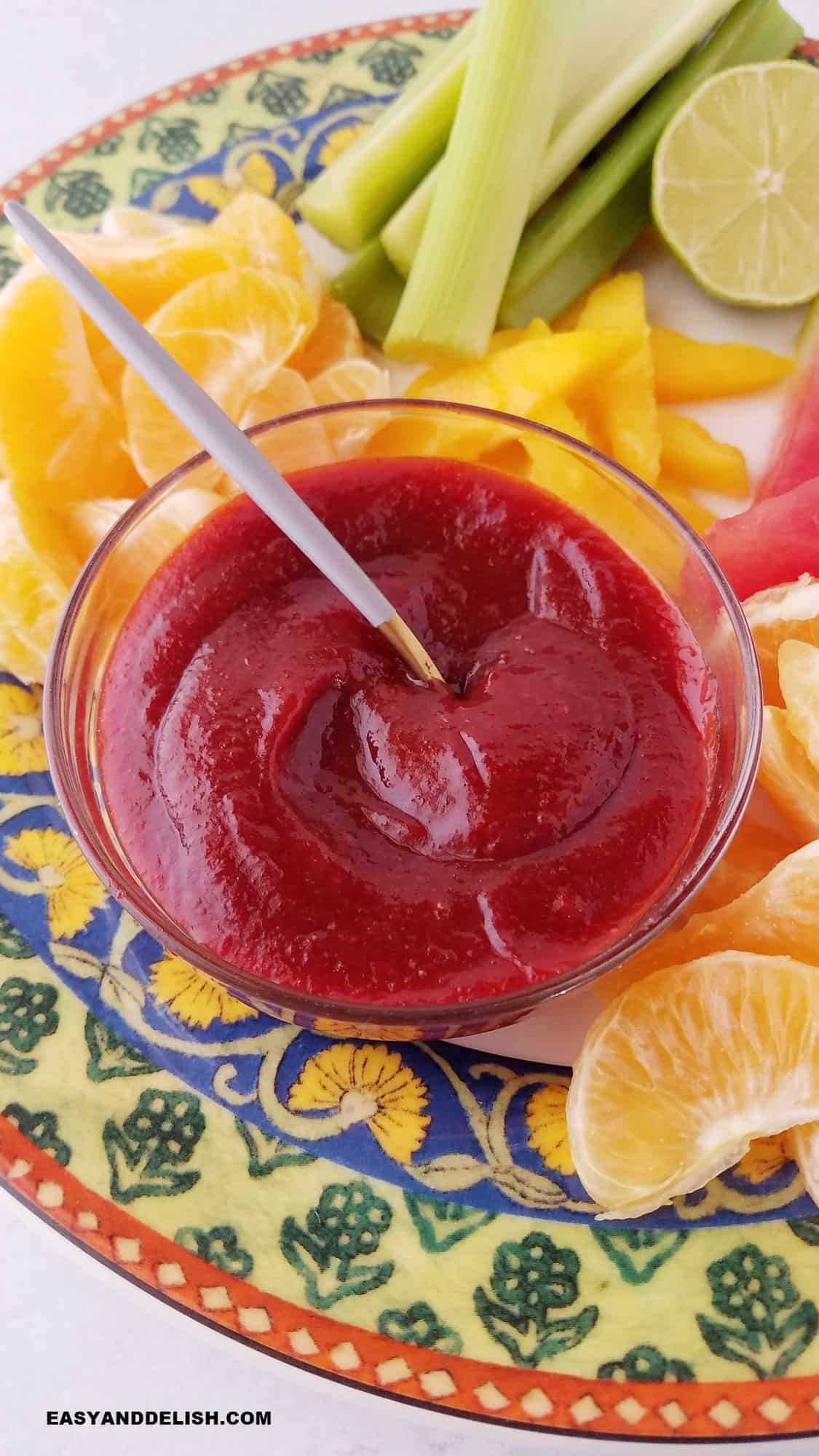
If you love Mexican food, you will be in love with this homemade chamoy sauce.
It is free of additives and easily customizable to fit your taste and dietary needs. You can even make it low-carb since it is not commercially available.
Plus, it is so versatile you can use it as a topping for ice cream, veggies, and fruits. Also, you can add it to cocktail drinks, use it as a dipping sauce, and even as a marinade for meats.
Ready?
Table of Contents
- 1 Why You'll Love This Homemade Chamoy
- 2 What is Chamoy Sauce?
- 3 History
- 4 Chamoy Sauce Recipe
- 5 Ingredients and Substitutions
- 6 How to Make Chamoy
- 7 Useful Tips for Making Best Chamoy Sauce
- 8 What to Serve with Chamoy
- 9 Chamoy Recipe Variations
- 10 Chamoy Sauce vs. Tajin Sauce
- 11 FAQ’s
- 12 How to Store Chamoy
- 13 Other Sauce Recipes to Enjoy
- 14 Chamoy Sauce
Why You'll Love This Homemade Chamoy
- Flavor-packed: The tangy, sweet, and spicy ingredients of this chamoy recipe offer a unique flavor profile you need to try at least once!
- Easy to make: With just a few ingredients and simple steps, you'll have the best chamoy sauce in no time.
- Versatile: You can use it as a dip, a marinade, or a dressing. Or, drizzle it on your favorite fruits and snacks!
What is Chamoy Sauce?
Chamoy sauce is a unique Mexican condiment known for its sweet, sour, spicy, and salty flavor profile. It's traditionally made with a base of pickled plums, but it’s possible to achieve a similar taste with dried fruits and salt.
It’s commonly used as a dip or sauce for a variety of snacks and fruits, but you can also find it in Mexican candies, drinks, popsicles, raspados, and more.
History
Chamoy is believed to have originated from the Chinese immigrants in Mexico who brought preserved fruits with them.
Over time, these preserves evolved into chamoy, now a quintessential part of Mexican cuisine. Chamoy sauce is the liquid variant of this culinary tradition, adding a flavorful punch to any dish.
Chamoy Sauce Recipe
This Mexican chamoy recipe is made with dried apricots, chiles, and Tajín, creating a traditional combination of sweet, spicy, and tangy flavors. Once blended, it transforms into a vivid red color with a smooth texture.
The heat from the chiles is perfectly balanced by the sweetness of the apricots and the tanginess of the lime and Jamaica. And despite its complex flavor, this chamoy sauce is budget-friendly and requires minimal prep and cook time.
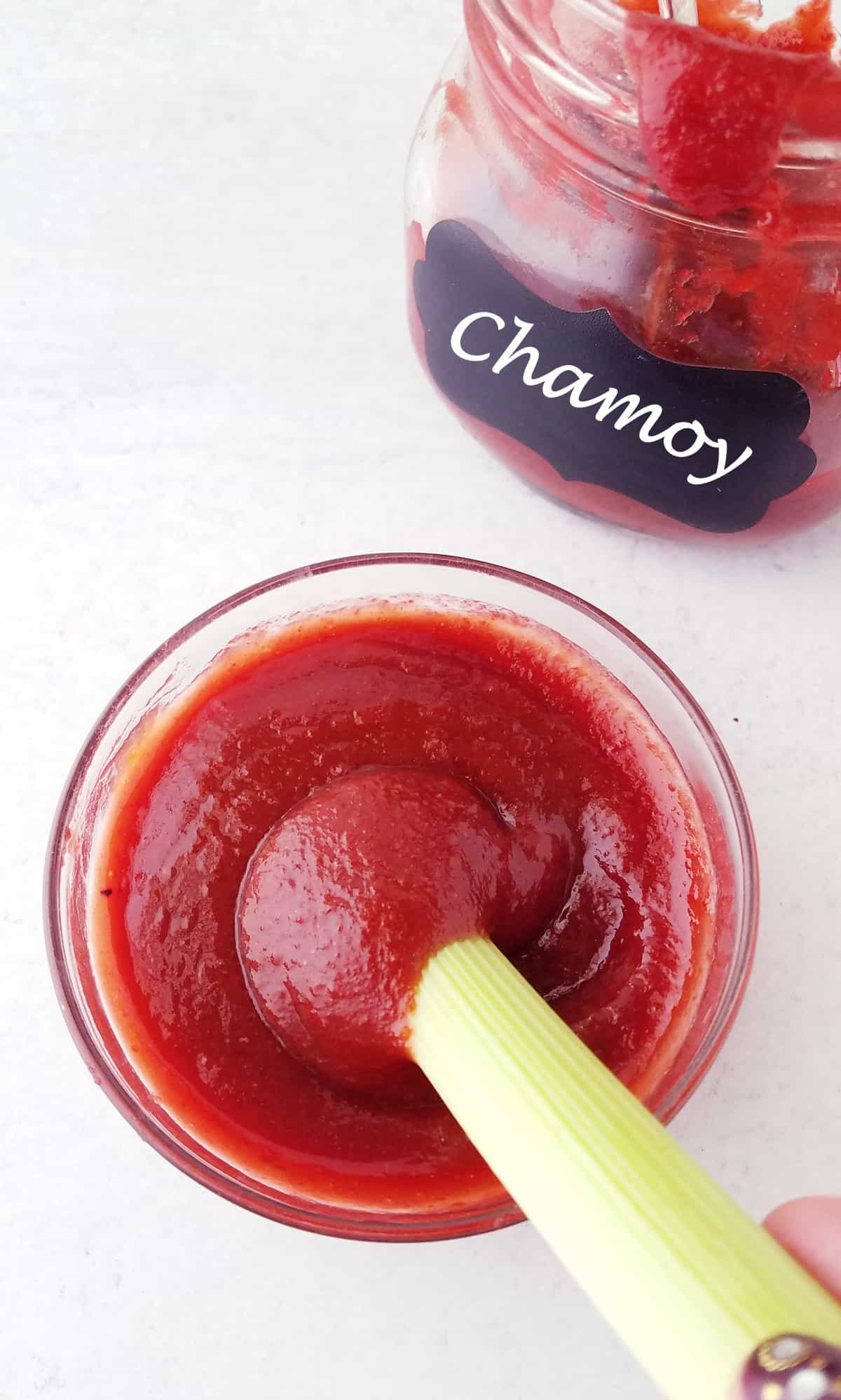
Ingredients and Substitutions
To make this chamoy sauce recipe, you’ll need:
- 4 ½ ounces (¾ lightly packed cup) dried apricots - You can also use dried mango or plums.
- ⅓ ounce (⅓ cup) dried hibiscus flowers - You could substitute this with hibiscus tea bags if needed. Hibiscus is used to make Jamaica.
- 1 guajillo chiles, stemmed, seeded, and torn into smaller pieces - Pasilla or ancho chiles will also work.
- 2 arbol chiles, stemmed - Or, try piquin chiles.
- 1 ¼ cups water
- ⅓ cup granulated sugar - Use stevia if you are on a low-carb diet.
- 1 ½ tablespoons Tajín (sold in many supermarkets) - If Tajín is unavailable, substitute it with a mix of chile powder, lime zest, and salt.
- ¾ teaspoon salt
- 4 ½ tablespoons fresh lime juice - You can also use lemon juice.
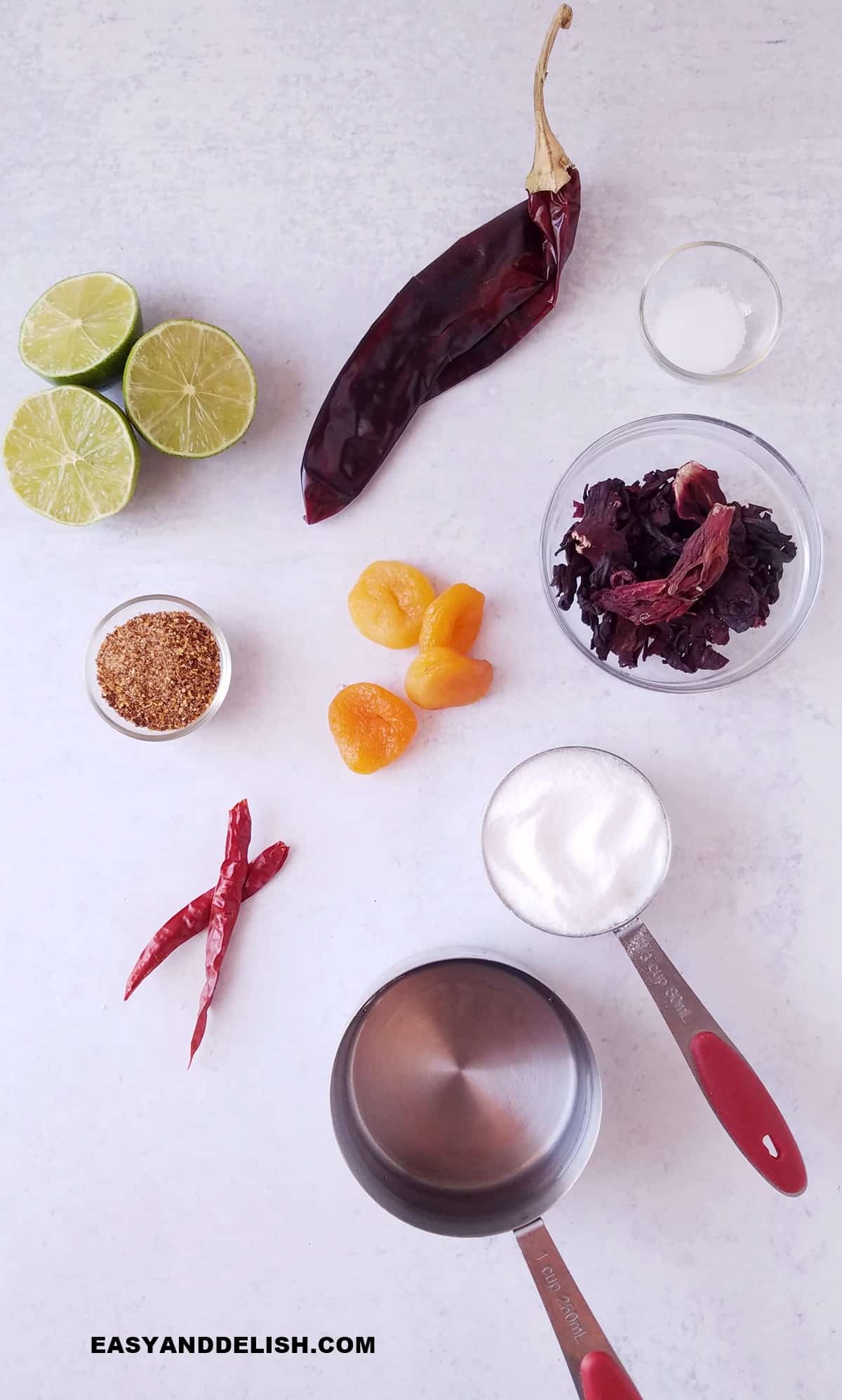
How to Make Chamoy
1. In a medium saucepan, combine dried apricots, jamaica flowers, both guajillo and arbol chiles, and water.
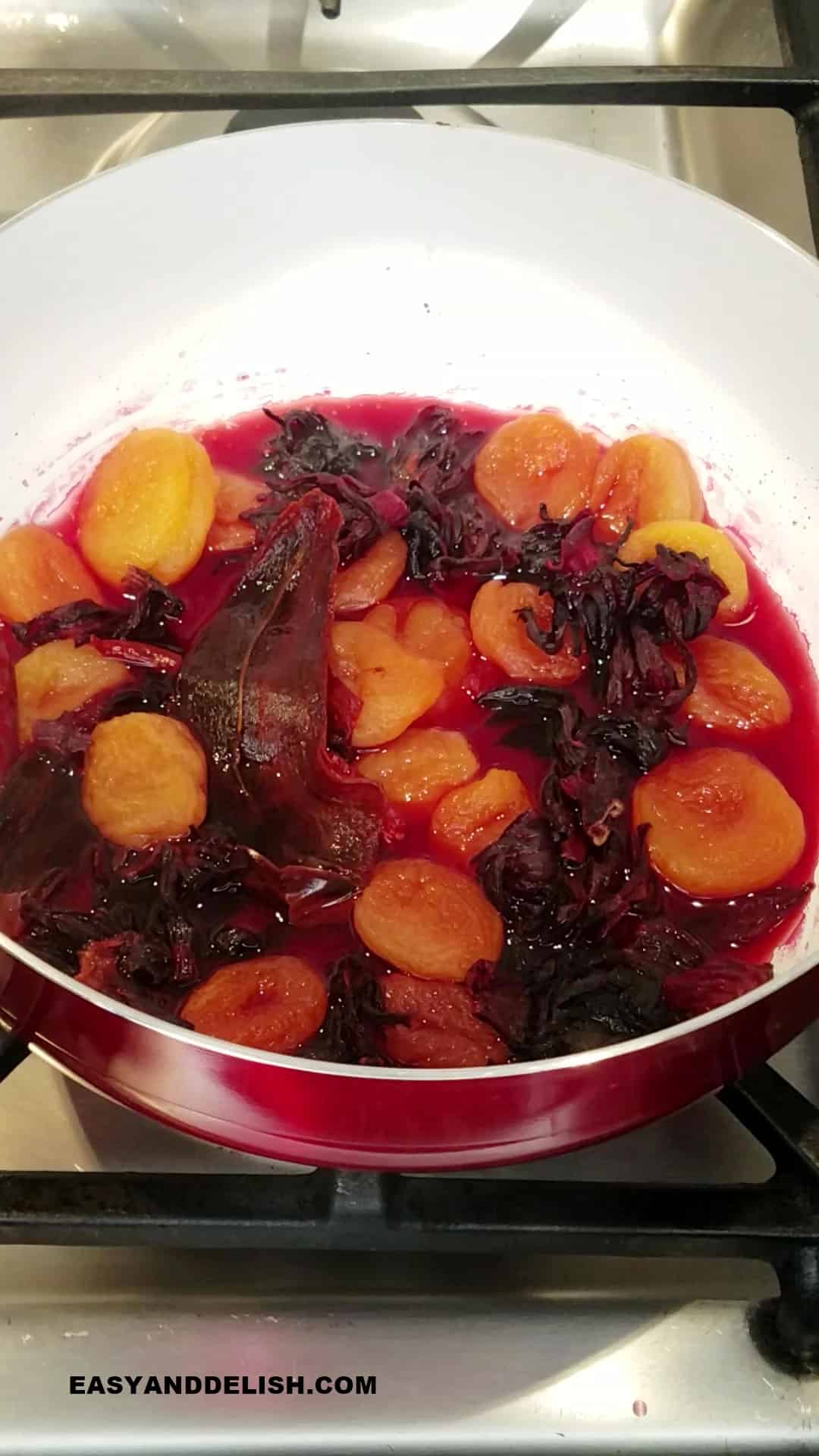
2. Bring the mixture to a full boil over medium-high heat. Then remove from the heat, cover it with a lid, and let rest for 30 minutes, or until the water is a deep purplish-red color and the dried apricots are soft.
3. Pour the mixture into a high-speed blender. Add sugar, Tajin, and salt, blending until smooth. If needed, add just enough water to blend the mixture. Don’t go overboard; otherwise, your chamoy sauce will be too liquid. Homemade chamoy is supposed to be a pourable yet thick sauce, not liquid. TIP: If you don’t have a high-speed blender, use an immersion blender. A food processor may not be able to blend the mixture until smooth.
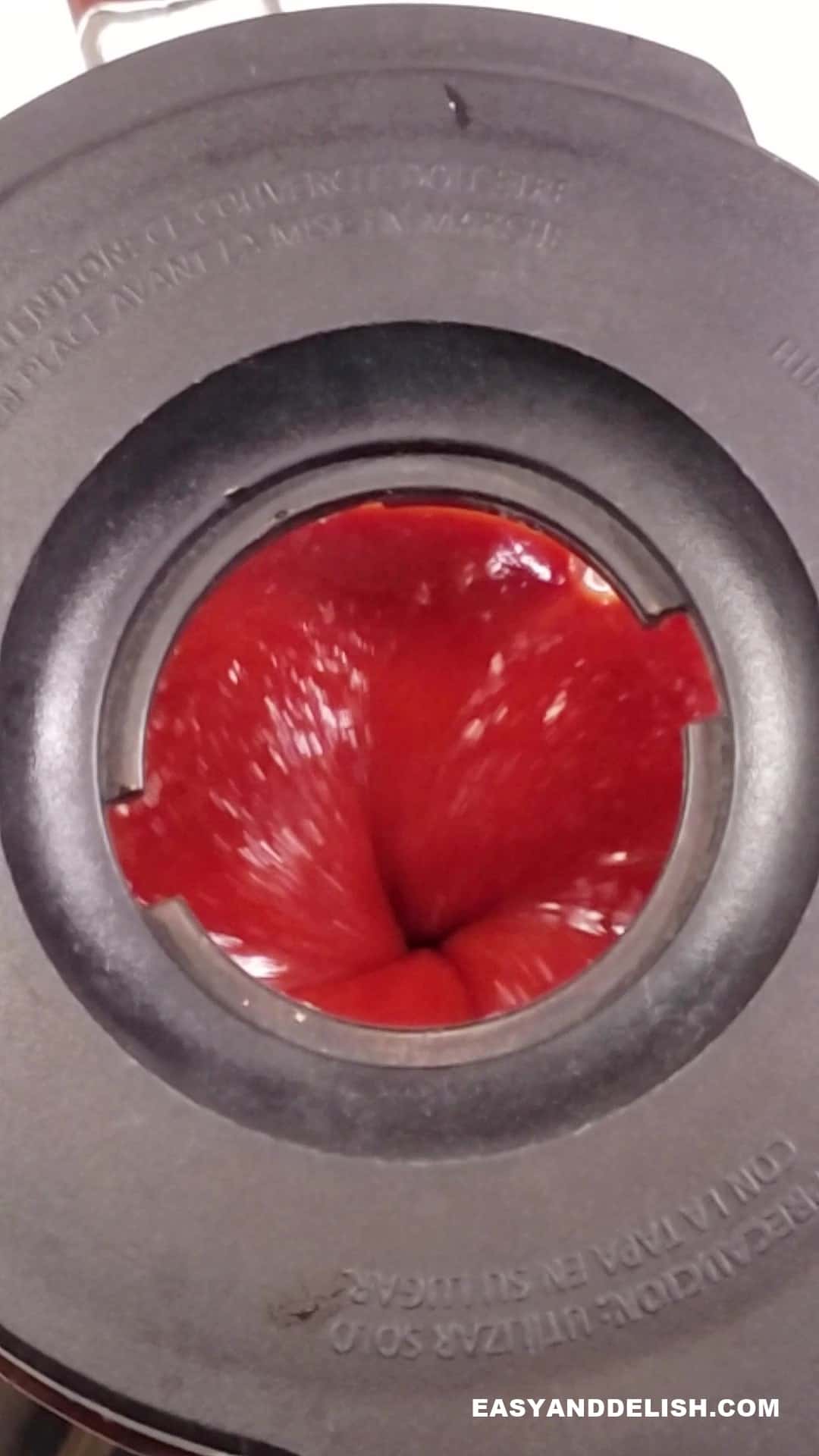
4. Then, strain the blended mixture and stir in lime juice.
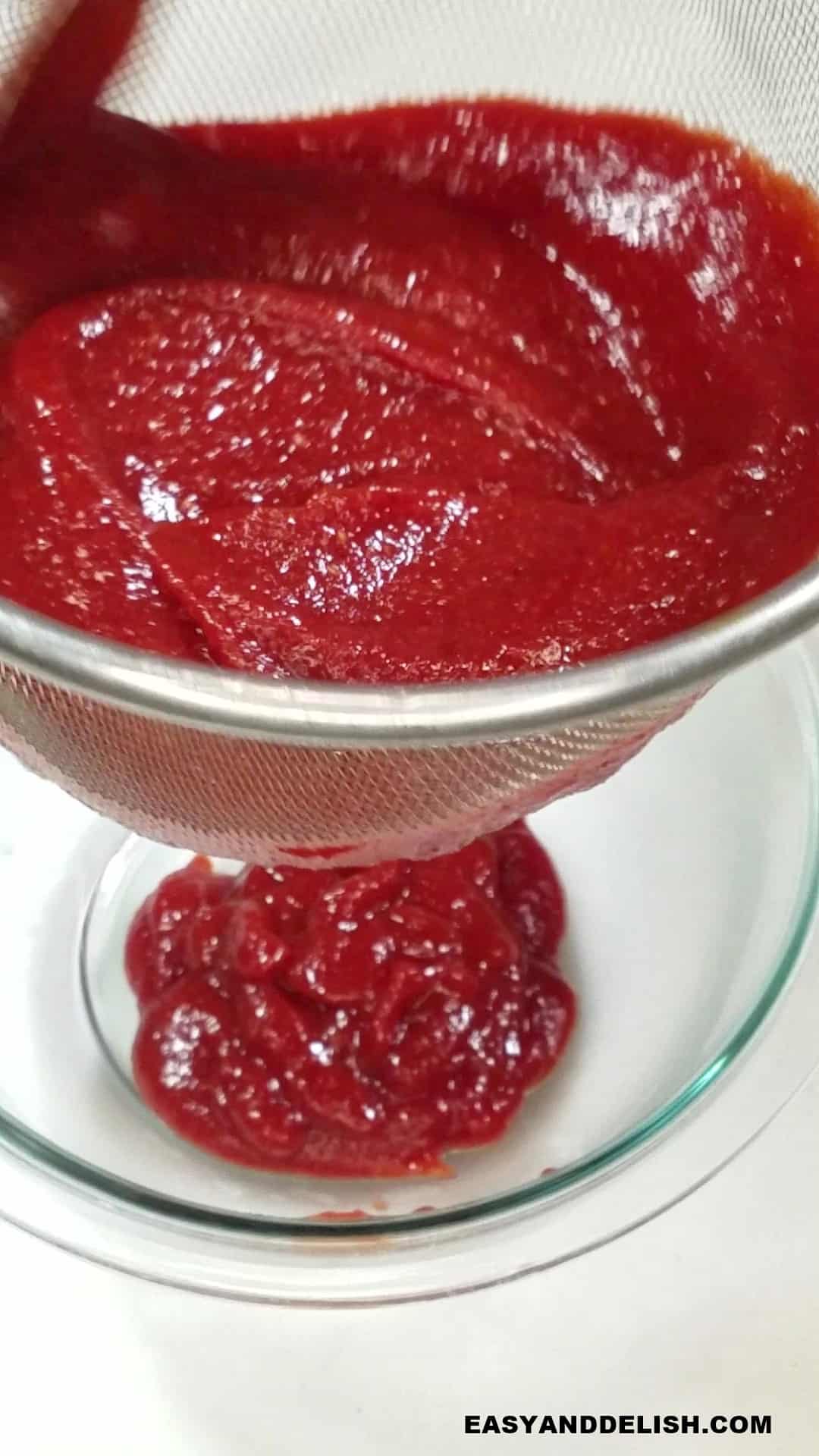
5. Pour into a Mason jar and refrigerate. It will last a month or so.
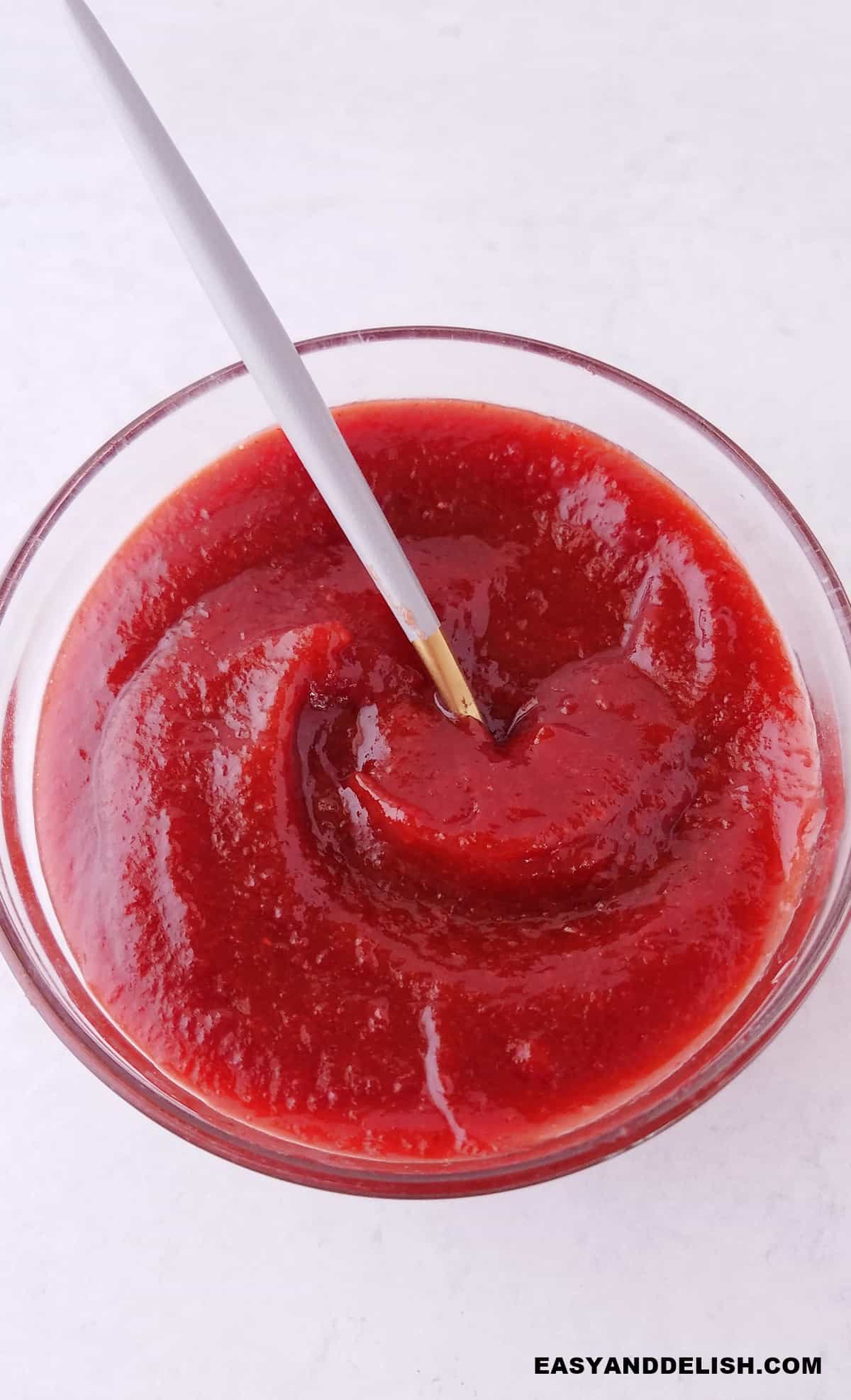
Useful Tips for Making Best Chamoy Sauce
- Adjust the spice levels to your taste by altering the number of chiles.
- Ensure the apricots are completely rehydrated for a smoother sauce.
- Use fresh lime juice for the best chamoy sauce flavor.
- Taste the sauce after blending and adjust the seasonings as needed.
- If the sauce is too thick, add a bit of water to achieve your desired consistency.
- For a sweeter Mexican chamoy, add more sugar or your preferred sweetener.
- Allow the sauce to cool before storing it to maintain its texture and flavor.
- Always refrigerate the sauce after making it to ensure it lasts longer.
What to Serve with Chamoy
This recipe for chamoy sauce pairs well with a variety of dishes, from sweet to savory. Test out some of these ideas to see what you like best:
- Drizzled over fresh fruit cups
- As a dip for vegetables or chips
- In a michelada (a Mexican beer cocktail) and in mangonada
- As a marinade for meats
- With ice cream for a spicy-sweet dessert
Chamoy Recipe Variations
- Candy: Mix your Mexican chamoy with gummy candies for a sweet and tangy snack.
- Creamy: Add some cream to the chamoy for a smoother, richer sauce.
- Fresh fruits: Blend chamoy with fresh fruits like mango or pineapple for a fruity twist.
- For a party: Make a large batch for parties and serve it as a dip with a variety of snacks.
- Chamoy with other fruits: Pair chamoy and Tajín with fruits like apples, cucumber, or watermelon for a delicious treat.
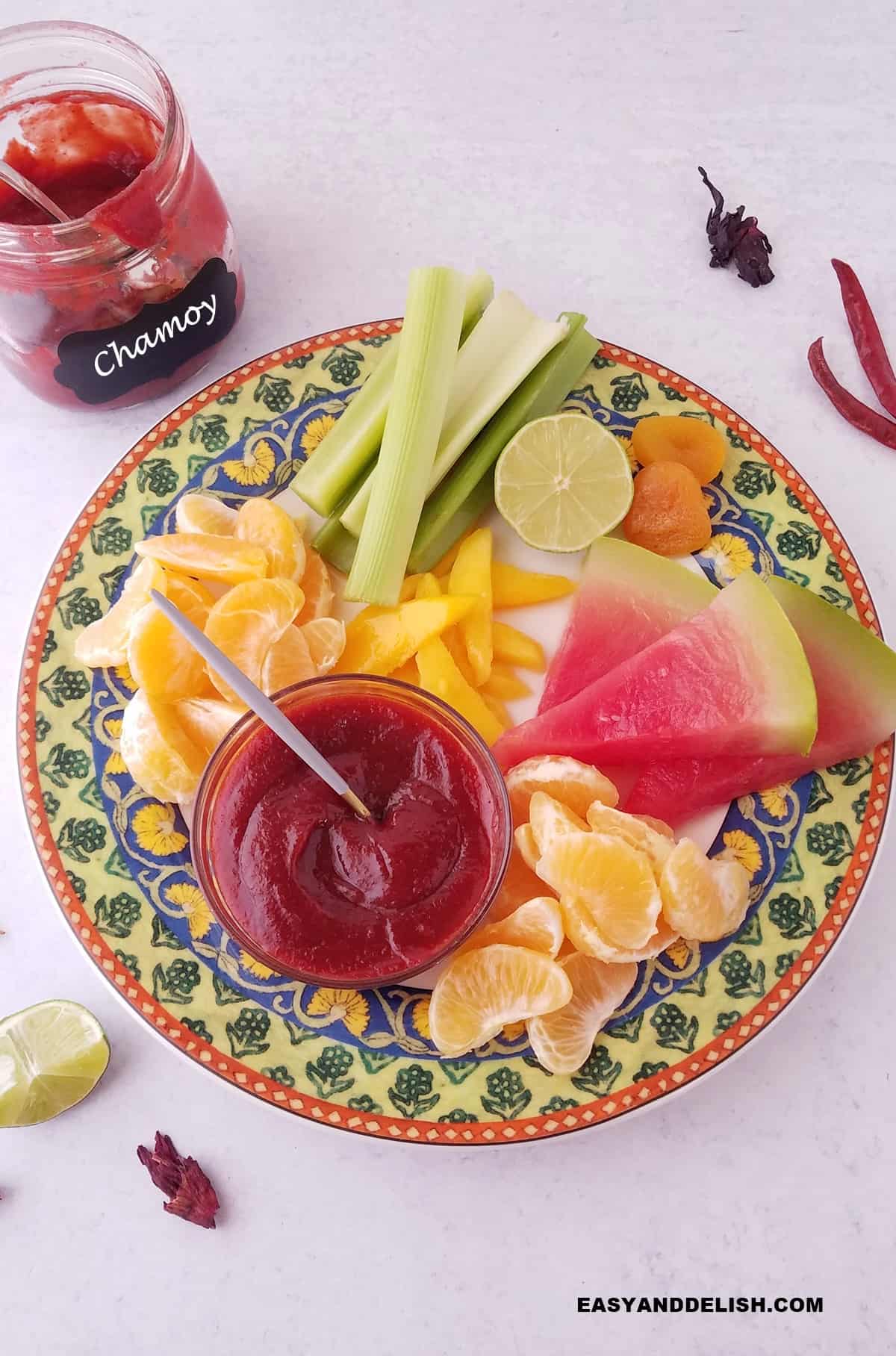
Chamoy Sauce vs. Tajin Sauce
While both chamoy and Tajín are known for their tangy, spicy flavors, they are quite different. Chamoy is a liquid sauce made from fruits and chiles, while Tajín is a dry seasoning made from chile peppers, lime, and salt.
One thing to note is that the brand Tajín actually makes its own chamoy sauce, but it is not as synonymous with the name as the chile-lime seasoning.
FAQ’s
What is Mexican chamoy made of?
Chamoy is made of dried fruit such as apricot, mango, or plums (or a combination of them), dried hibiscus flowers, water, Tajin, guajillo chile, chile de arbol, salt, sugar, and lime juice.
What does chamoy sauce taste like?
Chamoy sauce contains a unique combination of sweet, sour, salty, and spicy flavors. It’s one sauce you really have to taste to understand.
Are there different types of chamoy?
Yes, chamoy comes in several forms. Liquid chamoy is typically used as a sauce or marinade, chamoy paste is thicker and used as a spread or filling, and powdered chamoy is used as a seasoning or topping. In addition to consistency, there are different chamoy flavors like mango.
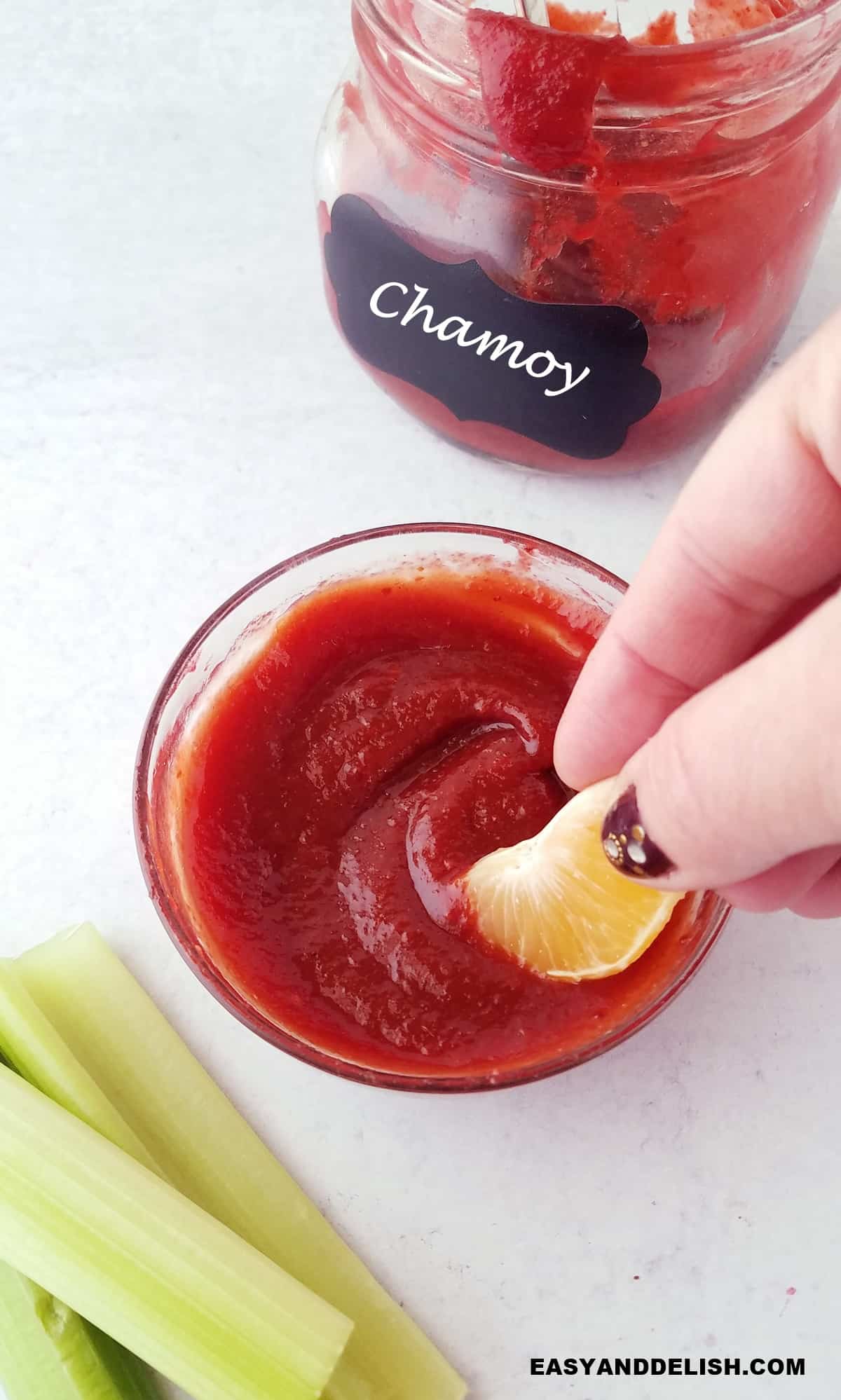
Is Tajin sauce like chamoy?
Both Tajin and Chamoy are popular in Mexican cuisine, but they are not the same. Tajin is a dry seasoning, while Chamoy is a sweet and sour sauce. I also must say Tajin is actually a brand name that also sells Chamoy. Their most popular powder has become synonymous with their brand name, Tajin.
Do chamoy and Tajin taste the same?
No, while they both have a tangy and spicy flavor profile, chamoy is a sauce with a fruit base and Tajín is a dry seasoning.
Is chamoy spicy?
Chamoy can be spicy depending on the type and amount of chiles used, but it also has a balance of sweet and sour flavors. In this recipe, most of the spice comes from guajillo and arbol chiles, so feel free to add more or less depending on your preference.
Are chamoy and chamoi the same?
Yes, chamoy and chamoi refer to the same sauce. The difference in spelling is due to regional variations.
Does commercial chamoy need to be refrigerated after opening?
Most store-bought chamoy will last in a cool, dark place for up to 3 months after it's opened. However, to maintain its freshness and prolong its shelf life, you can store commercial chamoy in the fridge.
How to Store Chamoy
For information on how to store chamoy, keep these tips in mind:
- Fridge: Keep the chamoy in a sealed container in the fridge for up to a month.
- Freezer: Chamoy can be frozen for up to 3 months in a freezer-safe container. Thaw it in the fridge before using it again.
- Prep ahead: This recipe is perfect for making ahead of time, as the flavors meld and intensify after a day or two. Just make sure you keep it in an airtight container.
Other Sauce Recipes to Enjoy
- Meat sauce
- Madeira sauce recipe
- Pomodoro sauce recipe
- Low-carb cranberry sauce
- Marinara sauce recipe
- Chimichurri sauce recipe
- Cilantro pesto sauce recipe
PIN & ENJOY!
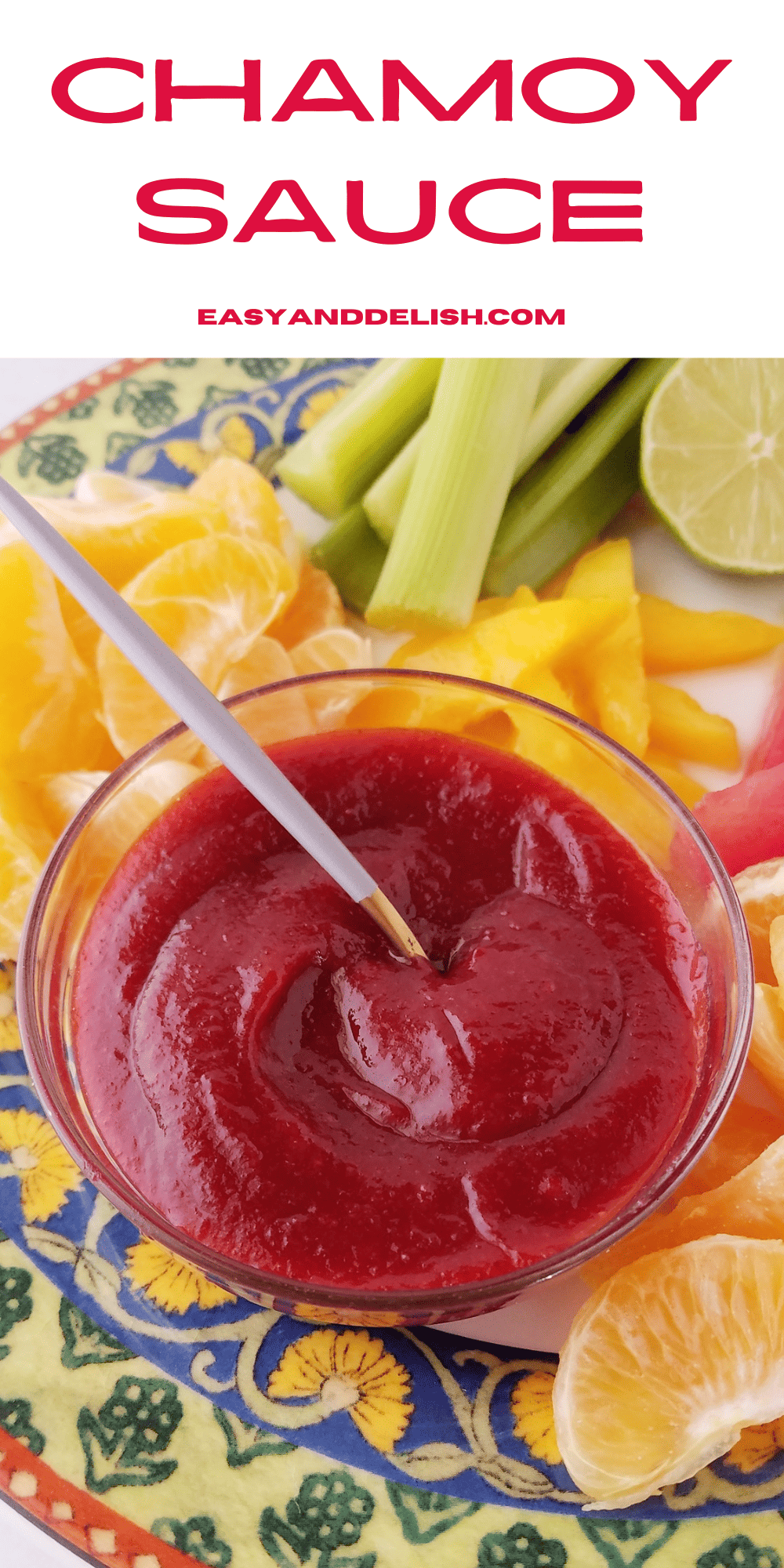
Chamoy Sauce
Equipment
- 1 medium saucepan
- 1 high-speed blender
- 1 Mason jar
- 1 strainer
Ingredients
- 4 ½ ounces dried apricots About ¾ cup, lightly packed -- You can also use dried mango or plums.
- ⅓ ounce dried hibiscus flowers About ⅓ cup - You could substitute this with hibiscus tea bags if needed. Hibiscus is used to make Jamaica.
- 1 guajillo chiles stemmed, seeded and torn into smaller pieces - Pasilla or ancho chiles will also work.
- 2 arbol chiles stemmed - Or, try piquin chiles.
- 1 ¼ cups water
- ⅓ cup granulated sugar Or you can use stevia if you are on a low-carb diet.
- 1 ½ tablespoons Tajín sold in many supermarkets - If Tajín is unavailable, substitute it with a mix of chile powder, lime zest, and salt.
- ¾ teaspoon salt
- 4 ½ tablespoons fresh lime juice Or you can also use lemon juice.
Instructions
- In a medium saucepan, combine dried apricots, jamaica flowers, both guajillo and arbol chiles, and water.
- Bring the mixture to a full boil over medium-high heat. Then remove from the heat, cover it with a lid, and let rest for 30 minutes, or until the water is a deep purplish-red color and the dried apricots are soft.
- Pour the mixture into a high-speed blender. Add sugar, Tajin, and salt, blending until smooth. If needed, add just enough water to blend the mixture. Don’t go overboard; otherwise, your chamoy sauce will be too liquid. Homemade chamoy is supposed to be a pourable yet thick sauce, not liquid. TIP: If you don’t have a high-speed blender, use an immersion blender. A food processor may not be able to blend the mixture until smooth.
- Then, strain the blended mixture and stir in lime juice. Pour into a Mason jar and refrigerate. It will last a month or so.
Recipe Video
Recipe Notes
- Fridge: Keep the chamoy in a sealed container in the fridge for up to a month.
- Freezer: Chamoy can be frozen for up to 3 months in a freezer-safe container. Thaw it in the fridge before using it again.
- Prep ahead: This recipe is perfect for making ahead of time, as the flavors meld and intensify after a day or two. Just make sure you keep it in an airtight container.
Nutrition
** Nutrition labels on easyanddelish.com are for educational purposes only. This info is provided as a courtesy and is only an estimate, since the nutrition content of recipes can vary based on ingredient brand or source, portion sizes, recipe changes/variations, and other factors. We suggest making your own calculations using your preferred calculator, based on which ingredients you use, or consulting with a registered dietitian to determine nutritional values more precisely.
Please note that health-focused and diet information provided on easyanddelish.com is for educational purposes and does not constitute medical advice, nor is it intended to diagnose, treat, cure, or prevent disease. Consult with your doctor or other qualified health professional prior to initiating any significant change in your diet or exercise regimen, or for any other issue necessitating medical advice.



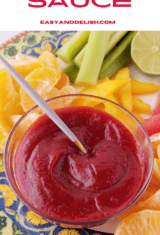
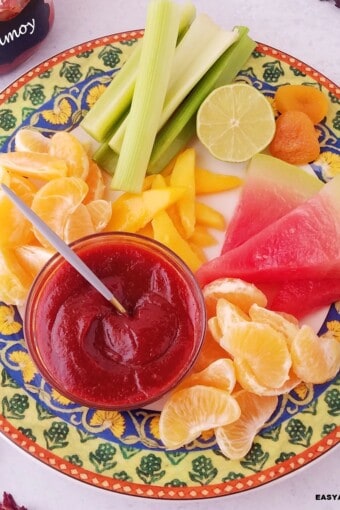
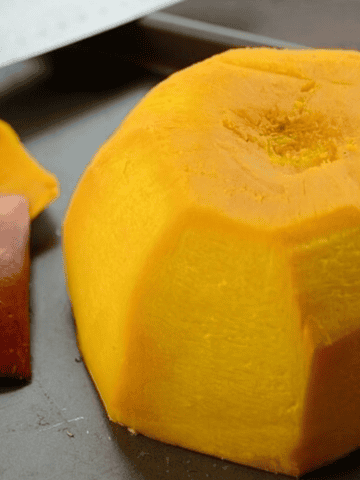
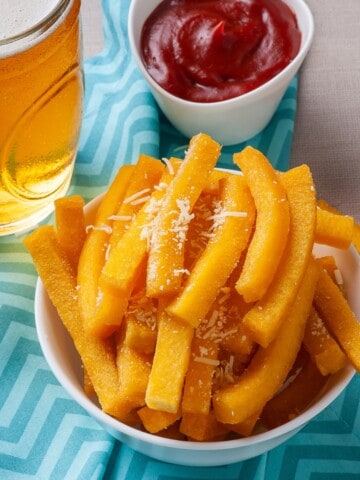
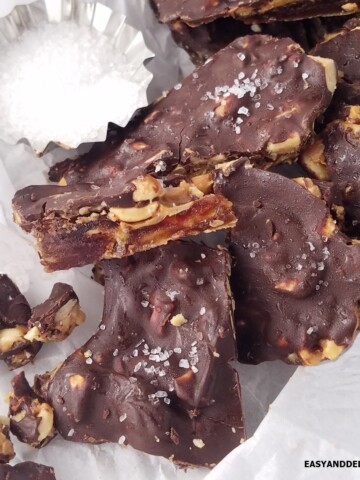
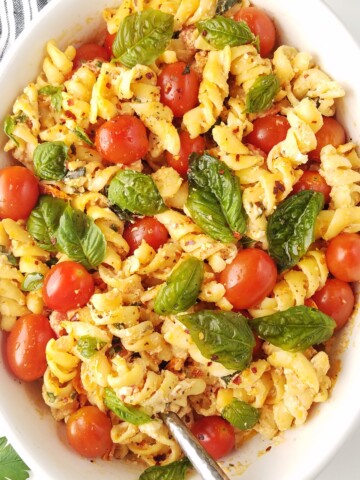
2pots2cook says
Dear Denise, there are so many things one can learn from you! I have never heard of chamoy but will definitely make it. I am so sure it shall become a staple in 2pots kitchen! Thank you and enjoy your day!
Denise Browning says
The pleasure is always mine! I have been living in Texas for about 16 years and our Tex-Mex cuisine has a big Mexican influence. Chamoy is present in mangonadas, mango popsicles, we use to pair with fruits (especially watermelon in the summertime), to top ice cream, and to add to cocktail drinks. As I said, it is an adventure to the palate! I hope you try it and enjoy it. You can reduce the amount of pepper if you are not used to spicy foods.